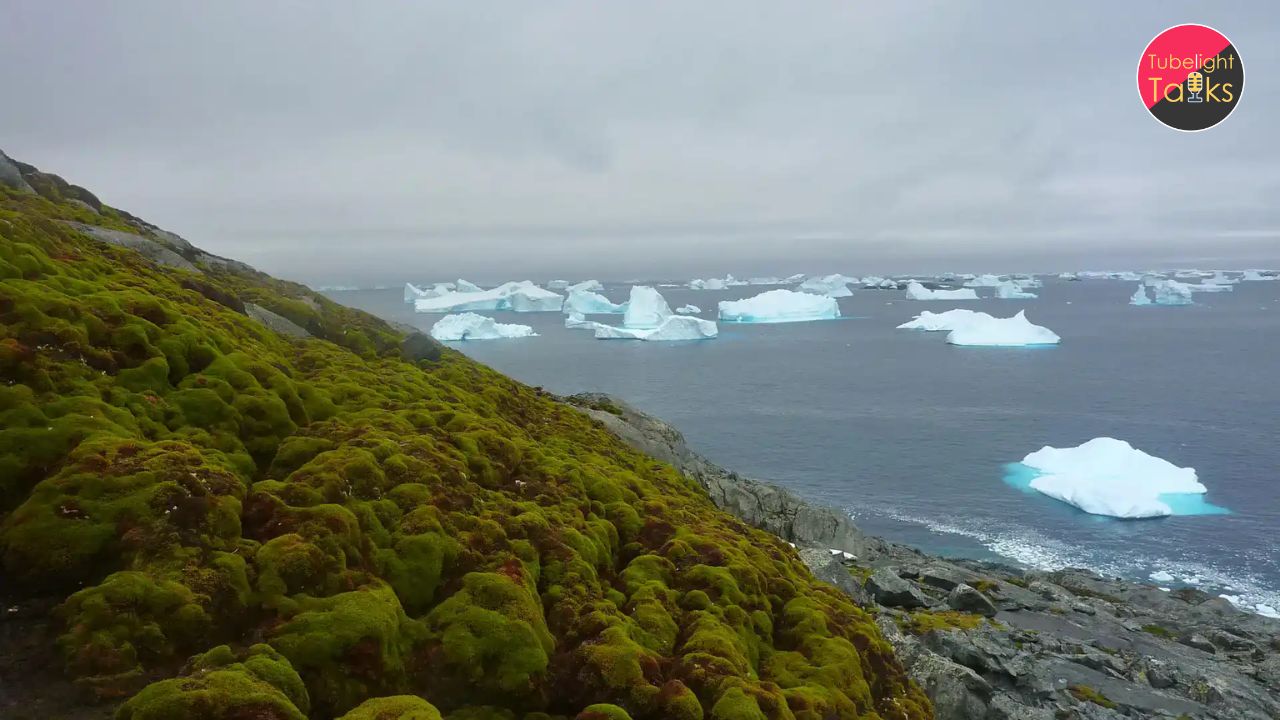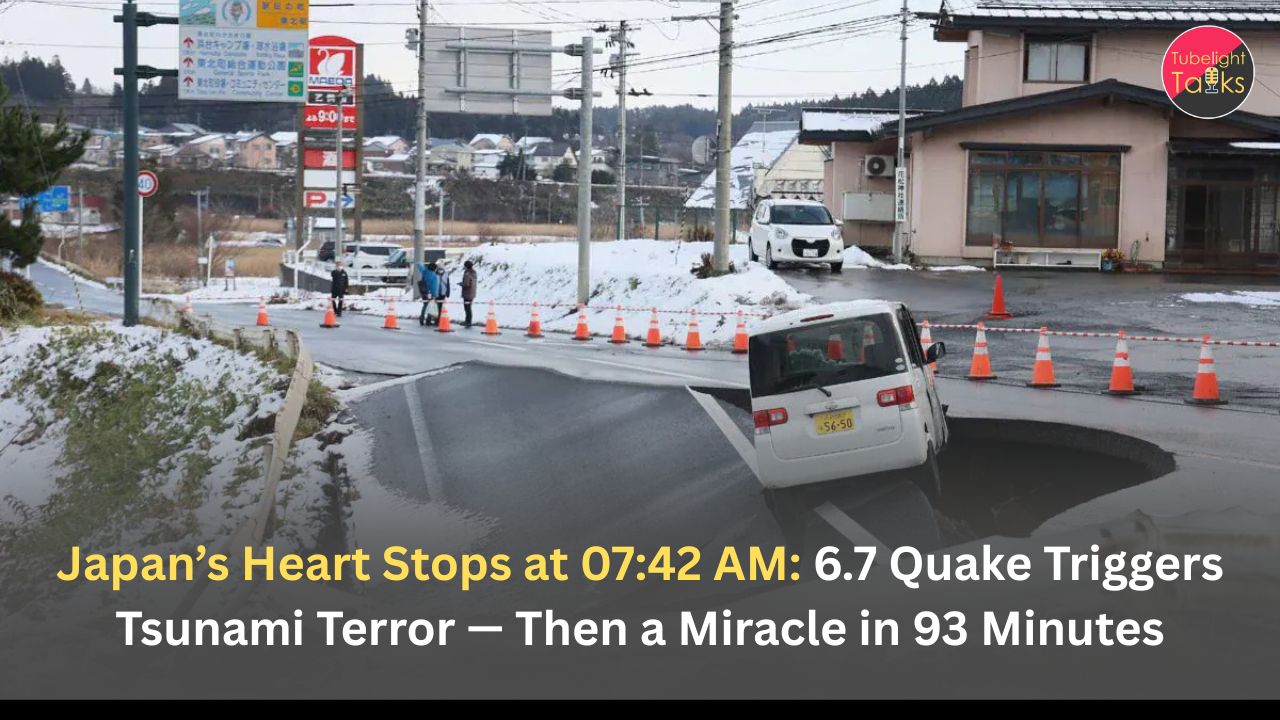Antarctica ice melting Key Points:
1. Flowering plants and mosses are spreading rapidly across the Antarctic Peninsula.
2. Scientists have issued urgent warnings about the global impact.
3. Average temperature on the Antarctic Peninsula has increased by 2.5°C over the last 50 year, five times the global average.
4. The peninsula has seen a 10-fold increase in greenery over the last 40 years, with plants now covering 12 square kilometers.
5. Vegetation has grown by 30% in the last five years, and this trend is expected to continue or even accelerate.
From Ice to Green, A Curse in Disguise
While the spread of greenery and vegetation might seem like a positive change, its implications for Antarctica are far from beneficial. This shift is a curse in disguise, as the growth of new habitats cannot offset the global consequences of rising temperatures, ice melting, and sea-level rise. Though new species may thrive, the larger picture reveals a more dangerous impact on the Earth’s balance.
Why is the ice melting in Antarctica?
This phenomenon is primarily driven by climate change, which has increased temperatures across the Antarctic Peninsula, facilitating the growth of vegetation and the formation of soil.
Understanding the Pace of Change
Scientists from the universities of Exeter and Hertfordshire have analyzed satellite images to track the spread of vegetation in the Antarctic Peninsula. The study shows that mosses and other plant life have expanded more than tenfold over the past 40 years. In 1986, vegetation covered less than 0.4 square miles; by 2021, it had grown to nearly 5 square miles. The rate of greening increased by over 30% between 2016 and 2021, signaling an urgent concern.
Why is Antarctica considered a Protective Ice Sheet?
Antarctica plays a critical role in regulating Earth’s climate. Its vast ice sheets, containing 60% of the world’s freshwater, act as a shield against global warming through the albedo effect, which reflects sunlight back into space. If these ice sheets melt, sea levels could rise by up to 58 meters, causing devastating effects on coastal regions worldwide. As the ice melts, darker surfaces are exposed, which absorb more heat and further accelerate global warming.
Record High Temperatures is a clear indicator
In March 2022, parts of Antarctica experienced temperatures up to 70°C above normal, setting a record for extreme heat anomalies in the region. In early 2024, temperatures reached 20.75°C (69.35°F)—the highest ever recorded on the continent. This increase in temperature is a clear indicator of the growing severity of climate change.
The Dangers of a Greening Antarctica
The spread of vegetation in Antarctica creates a vicious cycle. As more plants grow and absorb sunlight, the ice melts faster, warming the region even further. This not only disrupts ecosystems but weakens Antarctica’s ability to regulate the global climate. As more soil forms, more plants can grow, absorbing even more heat and continuing the cycle of destruction.
What is the albedo effect?
The albedo effect refers to the measure of how much sunlight a surface reflects back into space. A high albedo means a surface reflects most of the sunlight, while a low albedo means it absorbs more sunlight.
In the context of climate, surfaces like ice and snow have a high albedo because they reflect a large portion of solar radiation, helping to keep the Earth cool. When ice melts, it exposes darker surfaces (like ocean water or land) that have a low albedo and absorb more heat, contributing to warming. This creates a feedback loop: as ice melts, more heat is absorbed, causing more ice to melt, which accelerates global warming.
What is the Role of Spirituality in These Natural Phenomena?
No matter how advanced humanity becomes in technology, we cannot control nature. But who can? Spiritual scriptures suggest that only a divine power can control natural events. Calamities are within God’s control. According to spiritual texts like the Vedas and Puranas, the Supreme Power alone can prevent or reverse such changes.
These challenges persist because humanity has strayed from the true worship of God. The Great Spiritual Leader Sant Rampal Ji is reviving the correct method of worship based on sacred texts, offering a path to enlightenment and showing how true devotion can transform the world. He provides evidence from the Vedas and Puranas, demonstrating how faith in the Supreme God, Kabir Sahib Ji, can bring about change.
Antarctica becoming greener FAQs:
Q: What was the temperature in Antarctica this year?
A: In 2024, temperatures reached 20.75°C (69.35°F), the highest ever recorded on the continent.
Q: What can be done to stop this?
A: Reducing carbon emissions, switching to renewable energy, and taking strong climate actions can help slow warming and protect vulnerable regions like Antarctica.
Q: Why is this icy continent important?
A: Antarctica holds about 60% of the world’s freshwater in ice sheets. If these melted, sea levels could rise by 58 meters. The continent also regulates global temperatures by reflecting sunlight through the albedo effect, keeping the planet cooler.
Q: What are the major species found in Antarctica?
A: Antarctica is home to Emperor and Adélie penguins, Weddell and leopard seals, Antarctic krill, and minke whales. These species have adapted to the extreme cold and play crucial roles in the continent’s ecosystem.
Q: Are polar bears found in Antarctica?
A: No, polar bears live in the Arctic, including Alaska, Canada, and Russia. Antarctica is home to species like penguins and seals. The two poles have distinct ecosystems.










